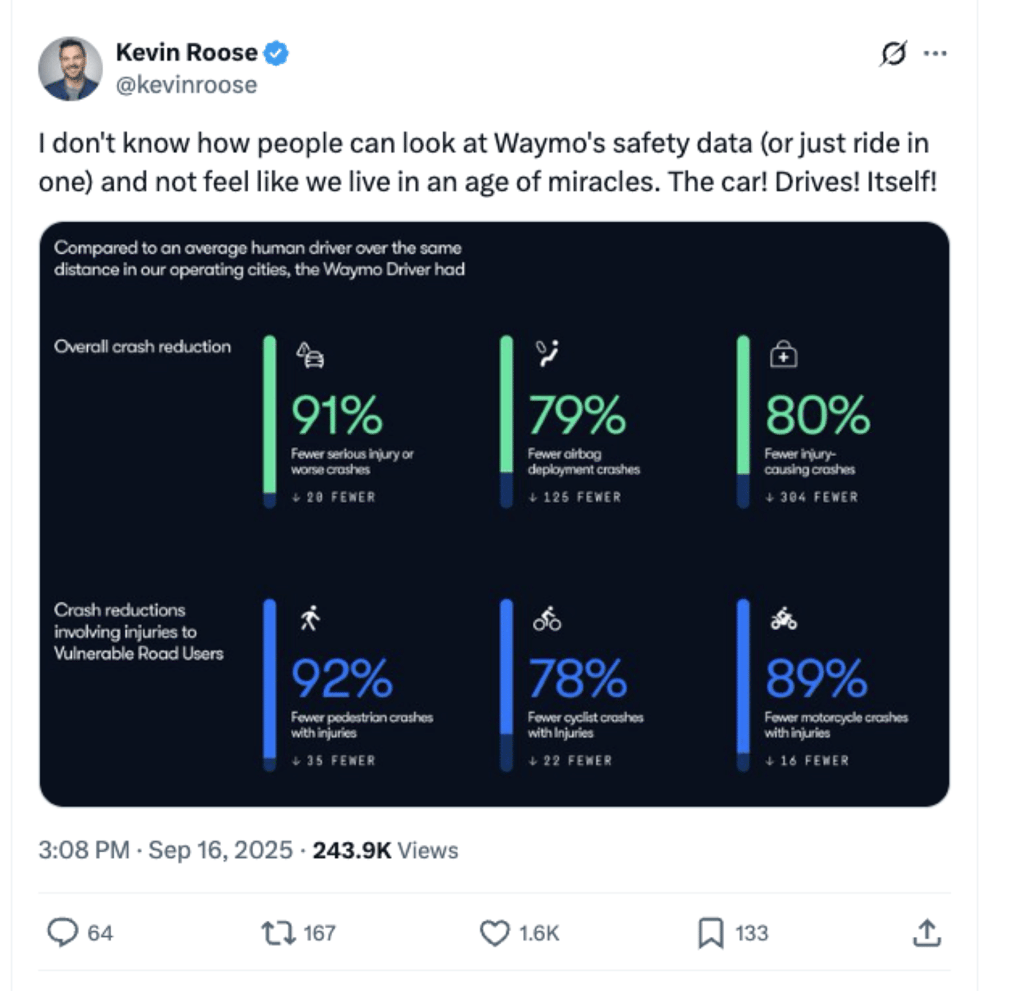It’s been about a year since we last covered Alphabet’s driverless car company Waymo. Since then, a massive peer-reviewed study analyzed Waymo’s performance over 56 million rider-only miles (i.e., where no humans were behind the wheel), and the results are pretty wild:
85% fewer suspected serious injuries compared to human drivers.
96% reduction in intersection crashes (where 27% of fatal crashes happen).
92% fewer pedestrian crashes.
82% fewer cyclist and motorcycle crashes.
For context, Waymo went from 10,000 weekly rides in May 2023 to 250,000 in April 2025. That’s ~25x growth in two years. If this rate continues, they could more than likely hit 1M weekly rides by early 2026.
The competition is on and popping
Amazon’s Zoox finally launched in Vegas with its toaster-on-wheels design — there is no steering wheel, and the seats face each other. Chinese players like WeRide and Pony AI are partnering with Singapore’s Grab for 2026 launches of their own.
And Tesla? Tesla is still very much in game. As far as its fully autonomous robotaxi service, called “robotaxi,” it launched in June out in Austin though not without controversy and will soon launch in Phoenix, too.
Where’s all this going?
Anyone (including you) owning and operating your own robo-fleet. Elon Musk made that a big part of his launch event for the robotaxi, and during Alphabet’s Q1 earnings earlier this year, Google CEO Sundar Pichai hinted at “future optionality around personal ownership.” Translation: You might eventually be able to buy your own Waymo that earns money while you sleep.
Why this matters
As Ethan Mollick says, with 40,000 killed and 2.4 million injured in U.S. accidents annually, an 85% reduction in serious injuries should be front-page news. Bigger cities are starting to catch on: NYC just approved Waymo testing, and Singapore’s fast-tracking approvals. Waymo also just announced a new launch in Nashville in partnership with Lyft.
The policy vacuum is a real issue
As Mollick noted, there’s not enough policy response to self-driving cars existing. With safety data this compelling, the question isn’t whether robotaxis will scale, it’s whether regulation and public opinion can keep up with the technology.
You can learn more by reading our deep dive about Waymo.
Editor’s note: This content originally ran in the newsletter of our sister publication, The Neuron. To read more from The Neuron, sign up for its newsletter here.
The post Waymo’s Safety Stats Are So Good, Even the Skeptics Are Running Out of Arguments appeared first on eWEEK.

No Responses